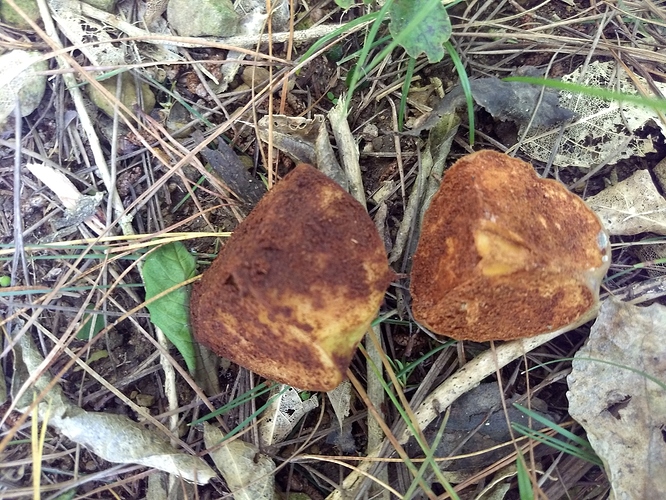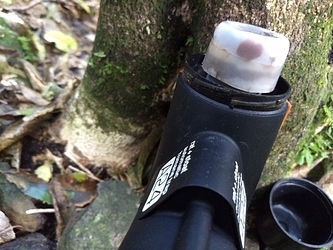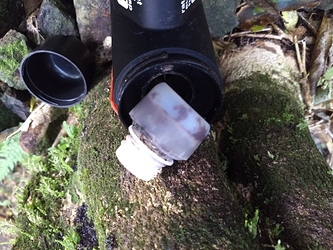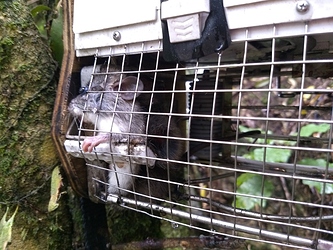There may have been discussion of this previously, if so, happy for someone to point it out.
I am sure there are many of you out there that suffer from baits going mouldy. I have experienced it (particularly in wet warm conditions) with Nutella, peanut butter, apples and salted rabbit. Sometimes the bait may last many days, but at other times the bait can become mouldy in a couple of days. I check my traps every day so I can replace mouldy bait, but it an be rather time consuming. More importantly, if I go away then the traps may be left with mouldy bait for many days. This may well affect palatability of the baits.
I decided to try adding a preservative that is well known for its anti-microbial properties, namely, potassium sorbate. Potassium sorbate is extensively used in the food and cosmetic products. It is also used to stop (kill the yeast) fermentation in wine making.
From a safety perspective, potassium sorbate does not appear to be high risk to people, at worst it is a mild irritant. I avoid breathing it by wearing a mask and wash my hands, but that’s about it. It is odourless and tasteless. Many people are eating it and putting it on their face every day! It is also pretty cheap and available from brewing shops. I imagine it may be the magic ingredient in some fast food items that can be preserved for years  but (disclaimer) I really don’t know and am not pointing the finger at any particular restaurant.
but (disclaimer) I really don’t know and am not pointing the finger at any particular restaurant.
So the questions I had were:
- Does potassium sorbate extend the life of baits?
- What concentrations are necessary?
- Does the addition of potassium sorbate affect the palatability/attractiveness of the bait?
Whilst I acknowledge it would take many months of rigorous research to answer these questions, I have come to few qualitative conclusions:
Does potassium sorbate extend the life of baits?
Yes. It appears very effective in the case of apples and salted rabbit. It is also quite effective for Nutella, but I have not optimized the concentration. I think the concentration needs to be considerably higher than is typically specified in foods and cosmetics. I have not trialed it for peanut butter.
What concentrations are necessary?
In the case of apples and salted rabbit, I just sprinkle a little on the surface of the bait, no need to be too precise.
Nutella - I am currently using about 0.75% by volume. I lack an accurate balance to measure this as precisely as I would like. I am still experimenting to find the optimum level, ideally I would control for humidity, temperature, initial mould spore counts etc. This is rather beyond my expertise, but I may try to control for humidity and temperature.
Does the addition of potassium sorbate affect the palatability/attractiveness of the bait?
No. There seems to be no effect on catch-rates for rats (Nutella), apple/cinnamon (possums and hedgehogs). My catch-rate with salted-rabbit is extremely low, so I can’t draw any conclusions at this stage.
Just a couple of other unrelated points:
- making peanut butter or nutella less viscous - add glycerol (another food additive)
- making peanut butter or nutella more viscous - add silica powder (but be very careful not to breath this).
I use these method when I bait in my A24s depending on whether it is Summer or Winter. You may have other uses.
Happy to field any questions you might have, or hear of your experiences.
In a related matter, I will likely shortly post on using lures in Victor traps. Let me know if you are keen and this will speed me up.
 . The problem for me is that I have caught so few stoats that I wouldn’t know if it wasn’t working! I am not sure whether this is because there are so few, or I am useless at catching them.
. The problem for me is that I have caught so few stoats that I wouldn’t know if it wasn’t working! I am not sure whether this is because there are so few, or I am useless at catching them.





